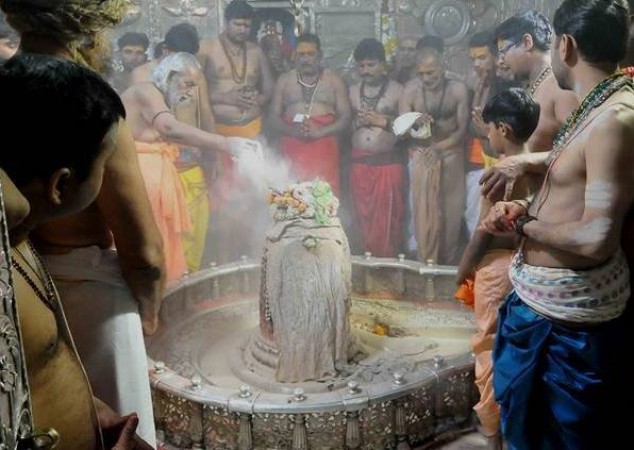
In the vast pantheon of Hindu deities, Lord Shiva stands out as a unique and enigmatic figure. One of the most distinctive aspects of his worship is his preference for adorning his divine form with ashes, known as "bhasma" in Sanskrit. Unlike other gods, who are often depicted wearing dazzling jewels and exquisite garments, Lord Shiva finds his ornamentation and divine splendor in the sacred ashes he applies to his body. This article delves into the profound symbolism and spiritual significance behind Lord Shiva's choice of bhasma as his exclusive adornment.
Why is Bhasma offered to Mahadev?
The Symbolism of Ashes
In Hindu mythology, ashes hold a profound symbolic meaning, representing the transient nature of life. Ash is the residue left behind after the burning of objects, signifying the impermanence of the material world and the inevitability of destruction. Through this symbolism, Lord Shiva conveys the message of detachment from worldly possessions and emphasizes the importance of recognizing the transient nature of life's pleasures.
Renunciation and Asceticism
Lord Shiva is often depicted as an ascetic, residing in the lofty peaks of Mount Kailash, absorbed in deep meditation and penance. His choice of ashes as his sole adornment reinforces his status as a symbol of renunciation and asceticism. By adorning himself with bhasma, he embraces the life of a hermit, transcending the allure of material possessions, and leading his devotees toward the path of self-realization and liberation (moksha).
Bhasma: A Symbol of Purity
In the Hindu tradition, bhasma is considered highly purifying and spiritually potent. It is typically made from sacred materials, such as cow dung, herbs, and ghee, and is produced through a meticulous ritual involving the chanting of Vedic mantras. When applied to the body, bhasma is believed to cleanse one's physical and spiritual impurities, preparing the devotee for higher spiritual pursuits.
The Blue Throat - Neelkanth
One of the most famous stories associated with Lord Shiva's connection to bhasma is the legend of the churning of the ocean (Samudra Manthan). According to this tale, during the cosmic event, a deadly poison (halahala) emerged from the ocean, threatening to destroy the entire universe. In an act of supreme self-sacrifice, Lord Shiva drank the poison to protect creation. As a result, his throat turned blue, earning him the epithet "Neelkanth" (the one with the blue throat). To alleviate the burning sensation caused by the poison, he applied bhasma on his body, cooling his skin and providing a soothing effect. This act exemplifies Lord Shiva's compassion and willingness to endure suffering for the sake of humanity.
Connection to Death and Rebirth
Lord Shiva's association with ashes also extends to the concepts of death and rebirth. As the lord of destruction (Mahadeva), he is responsible for the dissolution of the universe at the end of each cosmic cycle, paving the way for creation to begin anew. The application of ashes reminds his devotees of the cycle of life, death, and rebirth, emphasizing the cyclical nature of existence.
The practice of adorning oneself with ashes is not merely a stylistic choice for Lord Shiva, but a profound symbol of his spiritual essence and profound teachings. His preference for bhasma underscores the themes of renunciation, asceticism, and detachment from worldly pursuits. Through the sacred ashes, Lord Shiva imparts lessons of impermanence, purity, and self-sacrifice, encouraging his devotees to seek a deeper understanding of life's mysteries and strive for spiritual liberation. In worshipping Lord Shiva, followers learn to embrace the transient nature of existence, recognizing that true fulfillment lies not in the pursuit of material wealth and possessions but in the pursuit of self-realization and the path of righteousness. By applying bhasma on his body, Lord Shiva becomes the epitome of spiritual asceticism, guiding his devotees on a transformative journey toward higher consciousness and ultimate liberation.
Inside Ron DeSantis' Spiritual Journey and Political Path
Unraveling Adolf Hitler's Religious Beliefs: A Complex Historical Inquiry